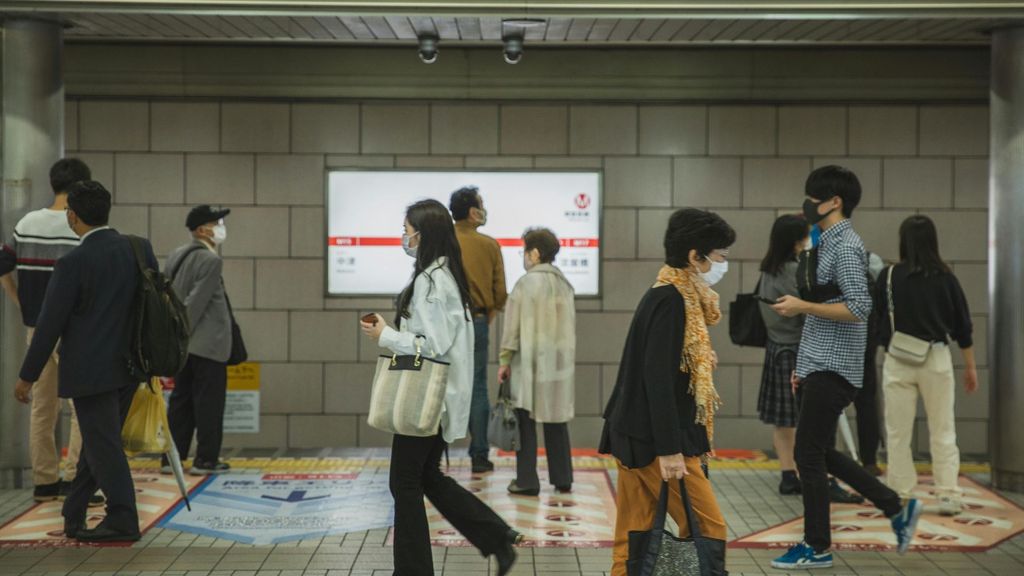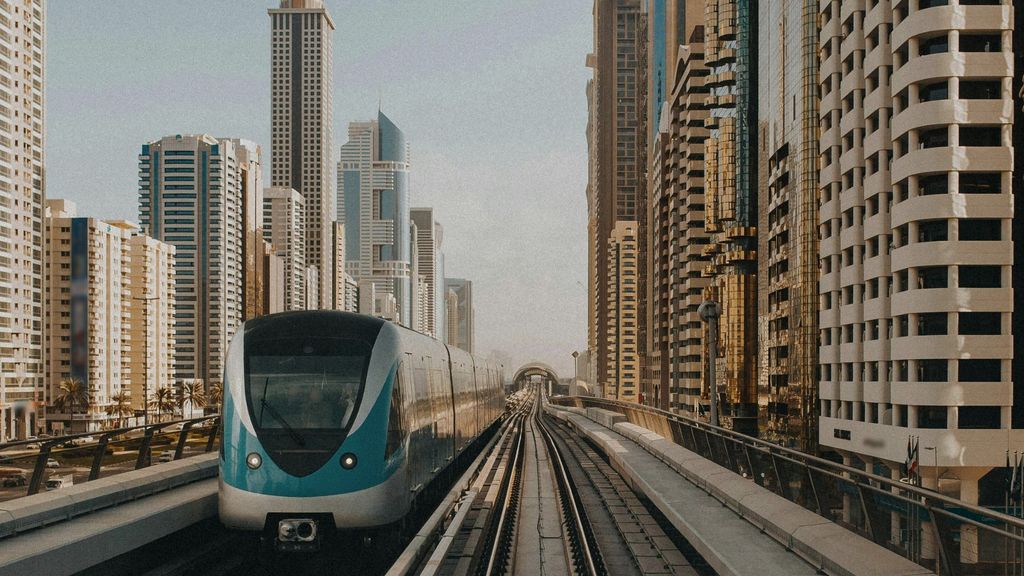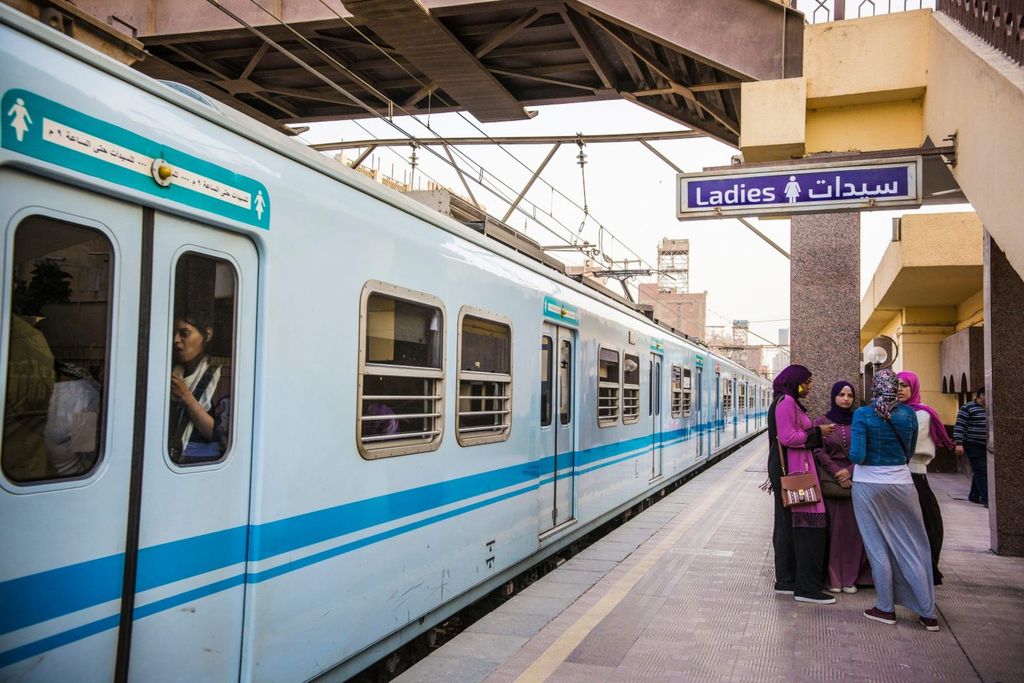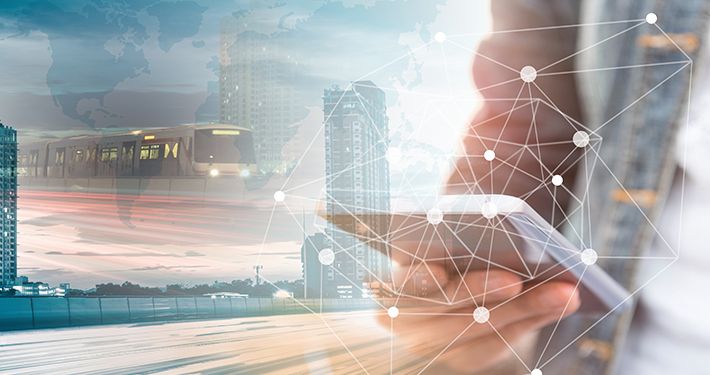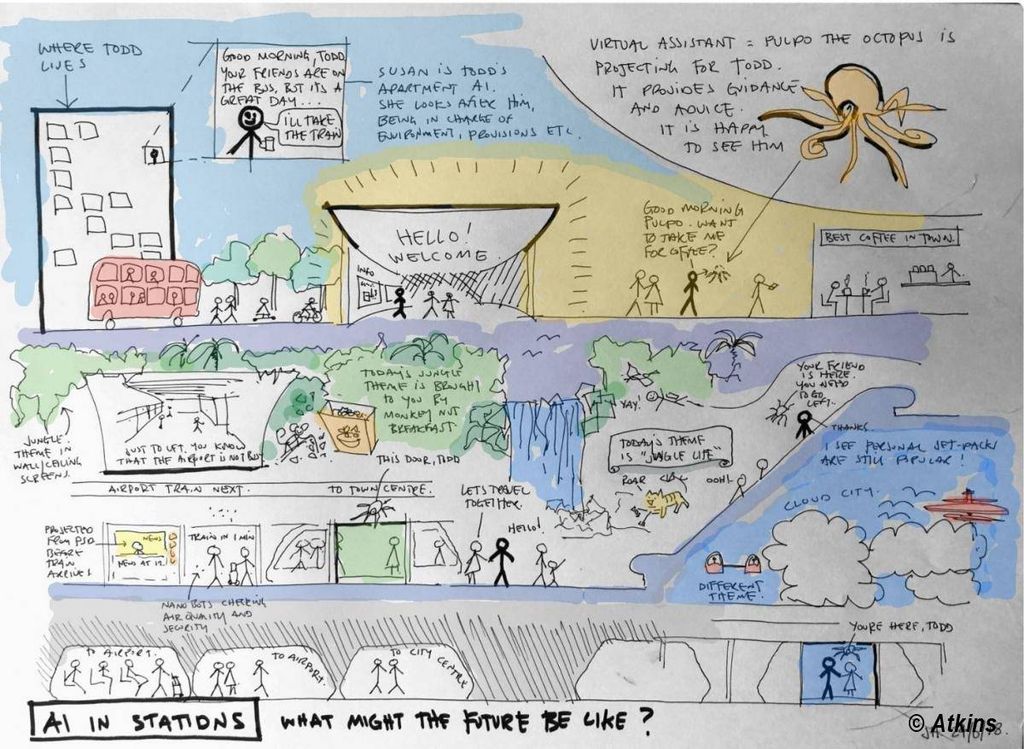

Blog: A Platform for Change
Metro systems have transformed cities over the past century.
Metro systems have connected people to employment, leisure and business opportunities and underpinned economic growth. Public transport, and in particular metro rail, will form the backbone of the city of the future too. As more and more people flock to our urban areas, we’ll need fast, efficient ways to move around. According to Atkins’ Jason Hutchings notes, the way we plan, undertake and pay for our journeys is already changing. So is it now the time to reconsider our approach to infrastructure as well?
The first metro trains rumbled through cities such as London, Boston and Paris more than 150 years ago. For the first time, they ran underground or on elevated tracks, which was an attempt to address the increasing congestion on inner city roads.
Boston’s first underground transit system (note that the entrances are direction-specific. i.e. no concourse)

Source: Library of Congress/Detroit Publishing Co
The stations that were built to serve them had dedicated entry and exit routes to control the flow of passengers, and subsequently so passenger fares could be collected; elevated platforms to help people board and alight from trains; and a concourse accessed by stairs, and later escalators, which was a place for orientation and for travellers to meet and gather.

Diagram by TfL of Bethnal Green Station, London Underground 1940

Image by Crossrail of escalators at Liverpool Street, Crossrail, London 2014
Over the years, people’s safety became a major concernand strict rules were introduced regarding staircases and evacuation routes, construction materials, layout, smoke extraction and operational requirements.
The result of that century of evolution is that most metro stations are designed according to a few key principles. And generally, stations have a similar arrangement, even in different parts of the world.
There is also another, increasingly important, aspect of metro station design. Atkins’ senior design director, Jason Hutchings explains:‘A decade or two ago, we looked at the provision of transport services as an engineering or a mathematical challenge. How many people can you move through a station, and with what level of congestion? There were a number of ways to answer the question – we assessed the space to determine if it would feel congested and restrict movement, and then based our design on an equation that would help us avoid that. But now, the focus has shifted away from the numbers to the people using the system. Transport operators believe they’re providing a service to their customers, in the same way as the retail or hospitality sector does, and we’re helping them create spaces that meet their customers’ requirements. Moreover, passengers are behaving differently now, to 20 years ago. Immediacy of information (smart devices streaming TV shows, games, news, books and social media) has resulted in a change in perception of congestion and delay. Many passengers are immersed in the digital world, irrespective of the physical world around them.’
This technology is already being used in some stations to help enhance passengers’ journeys. For example, automatic ticketing, journey planning and assistance, contactless payment options, free Wi-Fi and the provision of real-time travel updates. But there are more significant changes ahead. Artificial intelligence (AI) offers us an extraordinary opportunity to rethink the entire station environment.
Why AI?
There is already an incredible amount of data available to us – an average metro train has more than 2,000 sensors on it providing constant information to the operator in real-time, but more importantly, ‘big data’ and ‘metadata’ generated by the travelling public and the environment around us is increasingly available. For example, passengers’ data is captured at the time of booking, when they’re swiping in and out of stations, and even when they’re on the move within and in the areas adjacent to stations. The information helps operators understand a commuter’s preferences and habits. But the way it’s currently organised and accessed is inefficient and impractical.
Through AI, our computers will be able to search and recognize specific collections, patterns and trends in the data sets and inform decision making. It will enable operators to provide a more dynamic, on-demand service and, for example, reduce waiting times and maximise space on train carriages.
On a typical day on the London Underground, services are delayed through lack of trains (more out of service than anticipated), station access is impaired through faulty escalators (and lack of redundancy in older entrances), step-free access is only available through some stations, and internal wayfinding is non-intuitive and poorly signposted. All of these issues can be removed through today’s technologies and AI governance.
But such technologies can also be employed innovatively though AI. Paris Metro is considering using the technology to make the platform screen doors project a colour code that will tell waiting passengers where there’s congested versus free space on the next train. Combining AI with facial recognition technology (it’s already used in many transport facilities such as border control and anti-‘jay-walking’ surveillance) could help authorities spot behaviour that is out-of-the-ordinary and therefore locate a lost child, assist someone who is unwell, intervene in trouble, or address an emergency situation more quickly.
‘AI has the potential to transform mass transit, and by that I mean transport services that are provided for a large number of people,’says Jason.‘But I can see a point in the future in which our entire journey – from home to the office or leisure facility – is tailored to us, whether we use the metro, the bus network or we hail an autonomous car. Imagine you’re walking up to a metro station and an augmented reality avatar pops up in front of you with real time information that matches your schedule. You recognise it because you see it every day. In effect, the station personally welcomes you and informs you that the friend you are meeting for a coffee is already on the way because her face is recognised on the bus, and when entering her station. It suggests an alternative route to take to get to your common destination – the one arriving on platform one – is late. It suggests you go to platform three instead for a smoother journey, and arrive at your destination at the same time as your friend. The AI also informs your friend of your progress, removing the stress of public travel through assurance and communication.’
The impact of AI on design
So what does this “hyper-personalisation” mean for station designers? How will a proactive approach andinteractivetransport service change the way facilities are developed?
‘Whilst the next 20 years will see fundamental changes in the way we create, use and manage data, it is the 50-year horizon that fascinates me’admits Jason.‘This is the challenge for the transport community, as we are designing station buildings to conservatively address historical practice, for a world in which the pace of change potentially makes them redundant within a generation. Advances in technology are driving social change and we don’t know where it will take us. And yet, the infrastructure, including the stations, we’re designing must serve us for the next 100 years.
By way of a simple exploration of how AI and technology can affect station arrangement: If passengers no longer need tickets due to the use of systems such as Mobility as a Service (MaaS), we don’t need wayfinding because we have an avatar (or at least a personalized information service), and crowd management is unnecessary due to AI monitoring the station precinct, do we still need a station concourse? Could people access the platform directly from the street given they’ll know where they’re going and how to get there? In existing stations, could that space be re-purposed? Could the concourse become an art gallery in the future, and what do we (as designers) need to do to futureproof today’s stations such that these spaces (and the operational arrangement of the station) are suitably flexible. Simply removing the concourse makes stations quicker, cheaper and safer to build, reduces travel time and is more efficient in terms of building operation.’
In addition to the public spaces, embracing technologies such as nanotechnology, drones and swarm intelligence (under AI control), fire, flood and terrorist threats can be reduced. Events can be anticipated (or at worst, immediately recognised), and emergency response can be localised, thus risk to personal safety can be reduced. If technology can reduce risk, then stations may not need redundancy in egress routes and smoke extraction which currently make up a significant percentage of the station volume.
The transformation of railway and metro stations within London could offer a clue to the future. At the time St Pancras station was constructed it would have been difficult to imagine it as a vibrant dining and retail hub and yet its restaurants and shops draw people from far and wide, even when they’re not travelling.


Image from the National Archives of St Pancras Station opened in the late 19th Century, and as can be seen today with vibrant retail below the Eurostar platforms
Similarly, in Hong Kong, the synergistic development of stations and property development blurs the border between travel and lifestyle, not only environmentally, but also at a social and economic level.
Metro infrastructure, being one of high volume and density, is looking to the private sector for financing. The Rail+Property model in Hong Kong (whereby the rail operator is able to commercially develop property around the station) and public-private partnership (PPP) initiatives (such as Sydney’s new metro) will become the norm. With such external influence, the brief defining our stations will be more and more influenced by future-proofing, commercial property awareness, and the impact of tomorrow’s technologies.

Image by Atkins
‘Despite an ongoing paradigm shift in the way we engage with transportation, metro will continue to be an important part of our rapidly expanding cities. We can already see the impact of AI in our daily lives, but we need to imagine the extraordinary possibilities Artificial Intelligence will provide, and create the appetite now for stations that will inspire and engage people in the future,’says Jason.‘That’s difficult given the necessarily conservative nature of transport infrastructure and unprecedented pace of change, but it’s necessary, challenging and exciting.’
The Future…?
Your daily commute begins at home. Your apartment AI wakes you and provides information relating to the world around you, and your day ahead.
This AI has already been communicating with other systems on your behalf, and makes tentative arrangements with your friends and other appointments, factoring this into the advice you receive.
Approaching the station, the station AI reaches out and welcome you. It is part of the network which includes other methods of transport, and also events and activities within the proximity of the station. The station is aware of your habits and preferences, and provides a hyper-personalised service to you.
In this case as you begin you journey alone, you have elected to be accompanied by a holographic avatar representing the station. This friend, stays with you on your journey, is only visible to you if you so desire, and provides you with information, companionship, and entertainment.
The station itself is a place of entertainment, relaxation, excitement, education, or whatever you need it to be. You enjoy an exhibition of virtual artwork, while moving to the specific location on the platform where a friend of yours is waiting.
Although the ‘train’ still follows a prescribed route, individual cars are controlled such that there is flexibility in the provision of service, to exactly meet the predicted demand of the system. You are guided to the correct carriage, which knows of your arrival.
The carriage, is an extension of the station and provides a similar level of comfort and experience such that the transition between platform and train is minimised
As you reach your destination, the station AI greets you, advising you of any particular issues with respect to egress of the station, and updates you on amenities within the station precinct. It lets you destination know of your progress and asks about your return journey, and for any feedback.
Unknown to you, and while your journey was in progress, there was an incident elsewhere in the station….The AI was monitoring some suspicious passengers, and backtracking their movements together with collating sensor data, identified the chemical signature of a potential threat to life due to fire. The station activated its emergency micro-drone system, as well as individually advising passengers in the immediate location how to move away.
Specialist station drones inspected and were prepared to contain any outbreak of fire, as law-enforcement agencies who were informed of the suspicious passengers, apprehended them as they exited the station.
The cost of your journey is accounted for via an annual travel subscription. The activities in your day inform how other services are best tailored to your needs.
If at any time, or in retrospect, you feel something could’ve been done differently, you simply inform your own which act on this information collaboratively to improve your experience next time.
exclusive resources


